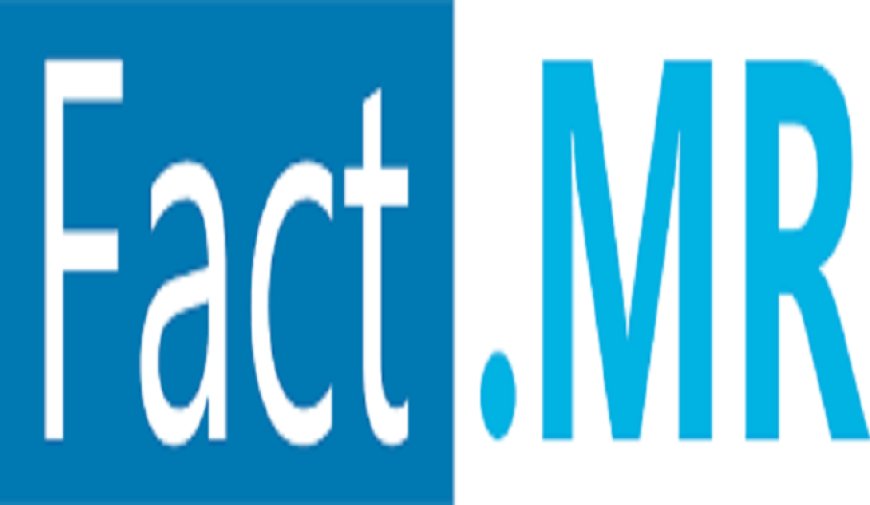Storage Segment Leads Automated Intralogistics Applications with 42.8% Market Share
The global automated intralogistics material handling solution market is expected to reach US$ 39.56 billion in 2024 and grow to US$ 126.2 billion by 2034, with a robust CAGR of 12.3% over the next decade (2024-2034).

The global automated intralogistics material handling solution market is expected to reach US$ 39.56 billion in 2024 and grow to US$ 126.2 billion by 2034, with a robust CAGR of 12.3% over the next decade (2024-2034).
The automated intralogistics material handling solution market is revolutionizing the way businesses manage their internal logistics and material flow processes. This market encompasses a range of solutions, including automated guided vehicles (AGVs), robotic arms, conveyor systems, automated storage and retrieval systems (AS/RS), and warehouse management software. These systems enable efficient and accurate movement, storage, and retrieval of goods within warehouses, distribution centers, and manufacturing facilities. With the rise of e-commerce, global trade, and the need for just-in-time inventory management, automated intralogistics material handling solutions are becoming integral to modern supply chain operations.
Market Insights
The adoption of automated intralogistics solutions is driven by their ability to streamline operations, reduce labor costs, and enhance accuracy. Traditional material handling systems often face challenges such as human error, inefficiencies, and labor shortages, which are addressed effectively by automation. For example, AGVs and autonomous mobile robots (AMRs) offer flexible and scalable solutions for transporting goods, while AS/RS systems optimize space utilization and inventory management.
Integration with advanced technologies like artificial intelligence (AI), machine learning (ML), and the Internet of Things (IoT) has further elevated the capabilities of these solutions. Real-time data analysis and predictive maintenance are now possible, enabling businesses to make informed decisions and minimize downtime. Moreover, automated systems are increasingly equipped with vision systems and sensors, enhancing their ability to handle diverse materials and navigate complex environments with precision.
The integration of software solutions, including warehouse management systems (WMS) and enterprise resource planning (ERP) tools, has also become critical in enabling seamless operation and coordination among various automated systems. This digital transformation is helping businesses achieve higher productivity and efficiency in their supply chain processes.
Future Outlook
The future of the automated intralogistics material handling solution market is bright, with sustained growth anticipated due to ongoing advancements in robotics, AI, and IoT. As businesses continue to prioritize efficiency and sustainability, demand for these solutions is expected to surge across industries such as retail, e-commerce, automotive, food and beverage, and pharmaceuticals.
The emergence of Industry 4.0 and smart factory concepts is likely to further accelerate market growth. These trends focus on the integration of automation, data exchange, and digital technologies to create intelligent and interconnected supply chain ecosystems. Automated material handling solutions will play a key role in achieving these goals by enhancing productivity and reducing operational costs.
Additionally, the market is expected to witness significant investments in research and development, leading to the introduction of innovative and more adaptable solutions. For instance, collaborative robots (cobots) are likely to become more prevalent, offering the ability to work alongside human workers to enhance productivity and safety.
List of Key Companies Profiled in The Report
- Linde Material Handling
- Dematic
- Jungheinrich AG
- Daifuku Co., Ltd.
- Toyota Industries Corporation
- Mitsubishi Logisnext Co., Ltd.
- Mecalux SA
- Others
Recent Industry News
The automated intralogistics material handling solution market has seen several noteworthy developments recently. Many leading companies are investing in cutting-edge technologies to enhance their product portfolios. For instance, advancements in robotics have led to the introduction of AMRs with enhanced navigation and adaptability, capable of operating in dynamic warehouse environments.
In addition, partnerships and collaborations between technology providers and end-users are becoming increasingly common. Such collaborations are aimed at co-developing solutions that address specific operational challenges, ensuring seamless integration with existing systems.
The COVID-19 pandemic also highlighted the importance of automation in maintaining business continuity during disruptions. As a result, many companies accelerated their automation strategies, leading to an uptick in demand for material handling solutions. This trend is expected to persist as businesses recognize the value of resilient and flexible supply chain systems.
Notable Developments
Notable developments in the market include the rising adoption of AI-powered robots and cloud-based software solutions. AI-enabled systems can optimize workflows, predict maintenance needs, and adapt to changing operational requirements in real time. Cloud-based platforms facilitate centralized control and monitoring of automated systems across multiple locations, improving overall efficiency.
Another key development is the use of digital twins in the design and optimization of intralogistics solutions. Digital twins allow businesses to simulate and analyze material handling processes in a virtual environment before implementation, reducing risks and improving system performance.
Furthermore, the shift towards autonomous vehicles in material handling is gaining momentum. From self-driving forklifts to automated delivery bots, these innovations are poised to transform the landscape of intralogistics, offering greater efficiency and flexibility.
Competitive Landscape
Key players in the automated intralogistics material handling solution market are focusing on product innovations and strategic mergers to expand their market share. In 2021, Toyota Material Handling Europe transitioned to using 100% renewable energy in its operations. In March 2024, SSI SCHAEFER launched LOGIONE, a user-friendly software for autonomous operation of the SSI LOGIMAT Vertical Lift Module. Additionally, Toyota Material Handling Japan introduced the MEGALORE power storage system in October 2023, repurposing old lithium-ion batteries for use in electric lift trucks, supporting sustainability initiatives.












